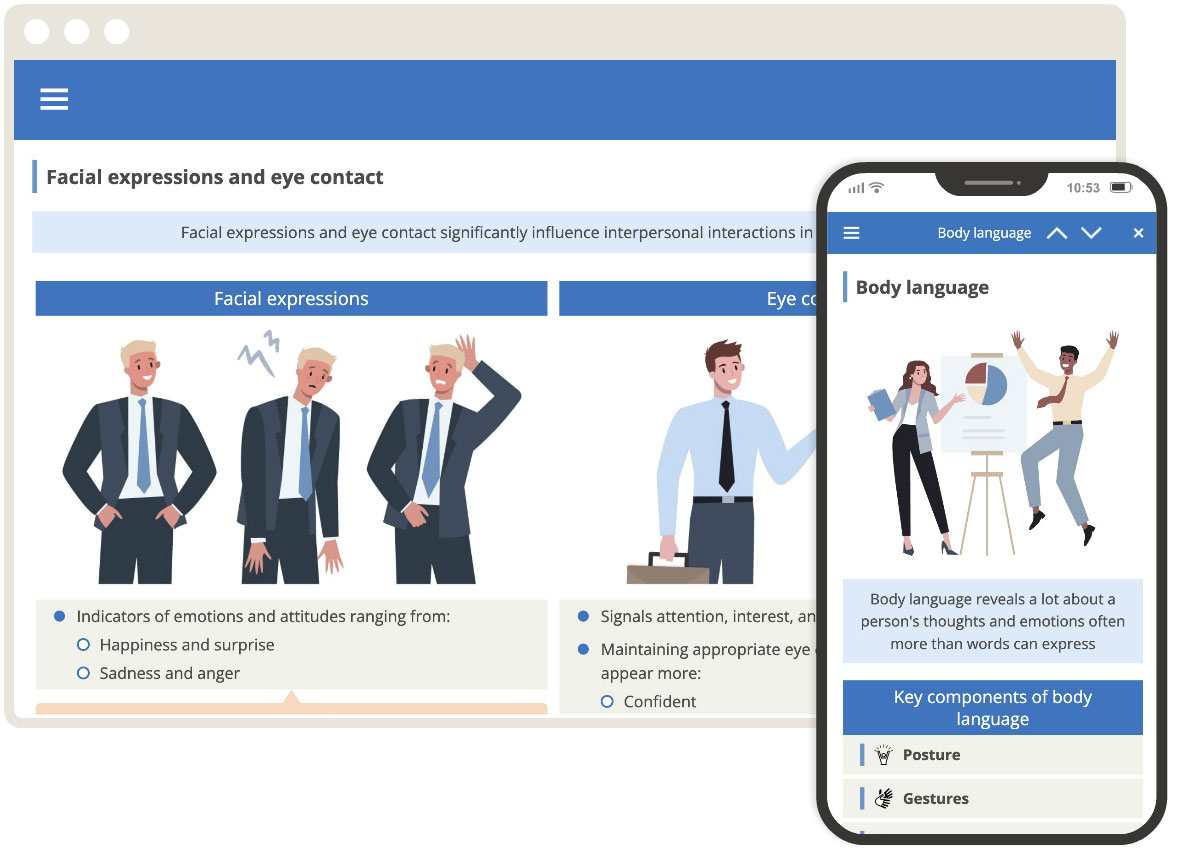Course overview
This course covers the essential aspects of non-verbal cues, including body language, facial expressions, eye contact, and paralanguage. Learn how to interpret and utilise these signals to enhance your interactions in meetings, presentations, and team collaborations.
Designed for professionals looking to improve their communication skills, this course will help you build stronger relationships, foster trust, and improve overall workplace dynamics.
This course can be accessed as part of any paid-for subscription


Learning outcomes
About this course
The course provides a comprehensive understanding of body language, facial expressions, eye contact, and paralanguage, and how these elements can significantly enhance communication in a professional setting. You'll learn to interpret and use non-verbal signals to build stronger relationships, foster trust, and improve team collaboration. Whether you're leading meetings, making presentations, or navigating daily workplace interactions, this course will equip you with the tools to communicate more effectively and confidently.
Course highlights
Why choose this course?
Our Non-Verbal Communication in the Workplace course is expertly crafted to provide practical, actionable insights that can be immediately applied in your professional life. Improve your professional interactions, build stronger connections, and become a more effective communicator. It offers engaging, voice-over driven, animated content, interactive test questions and a printable certificate.
